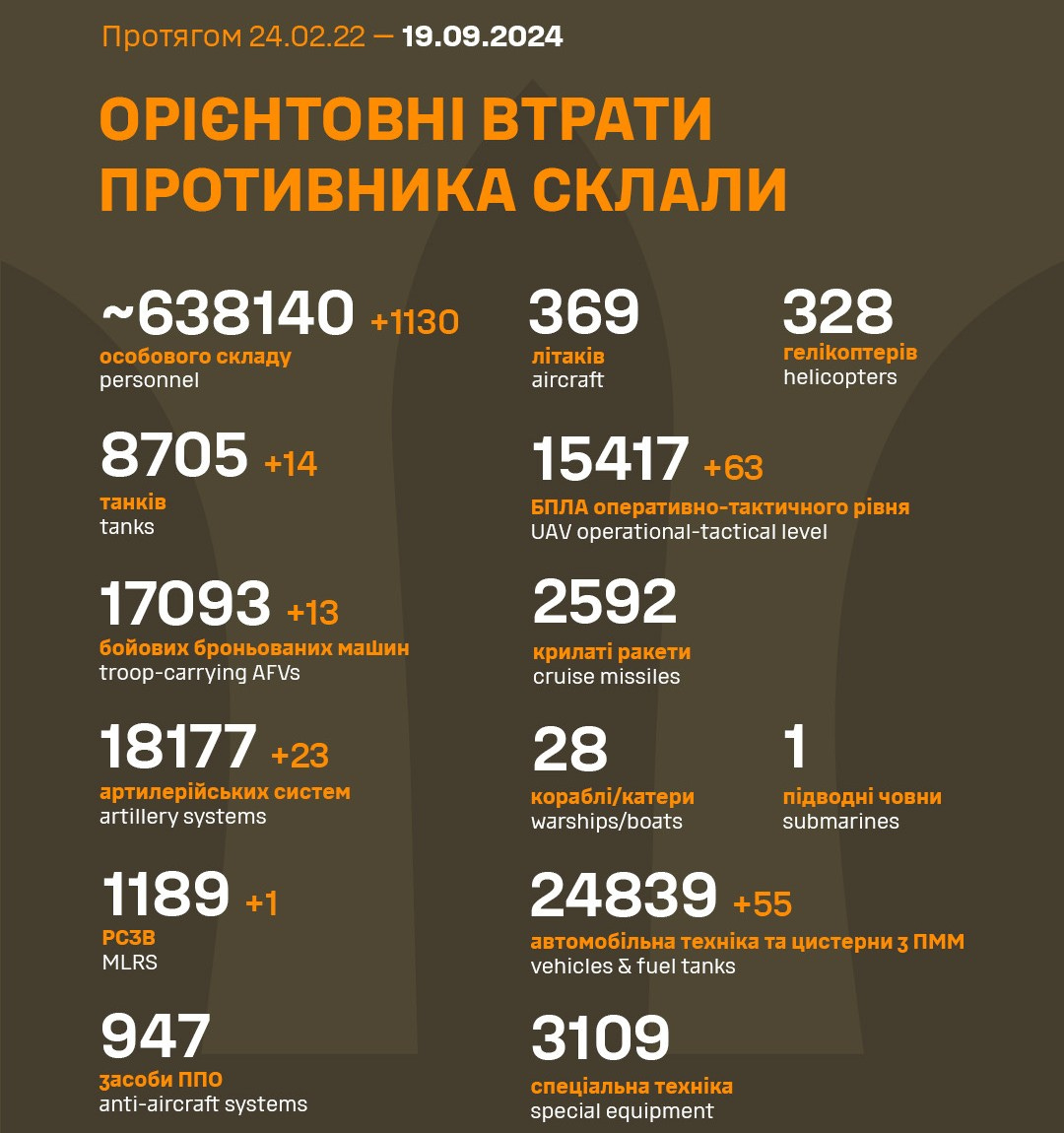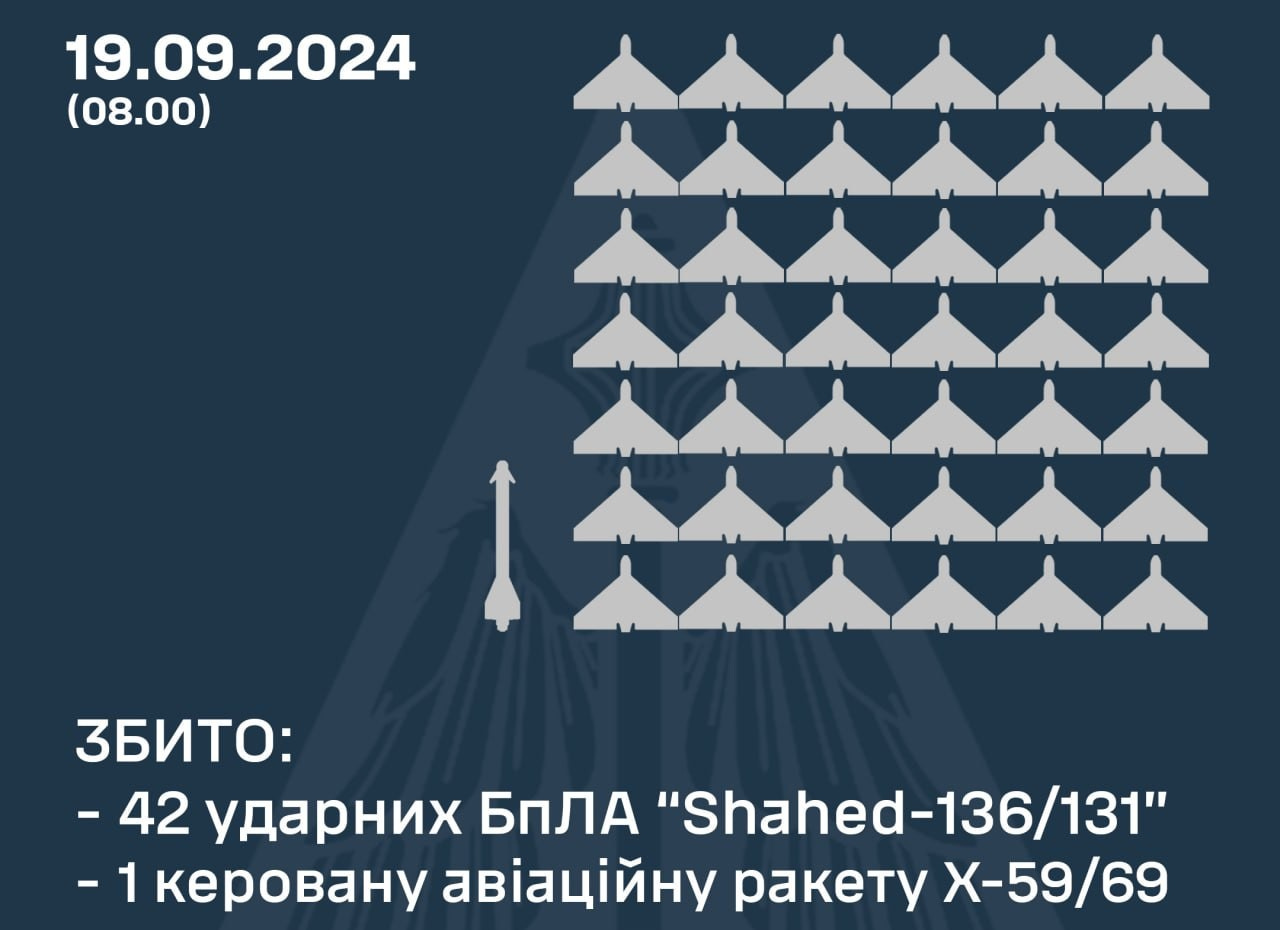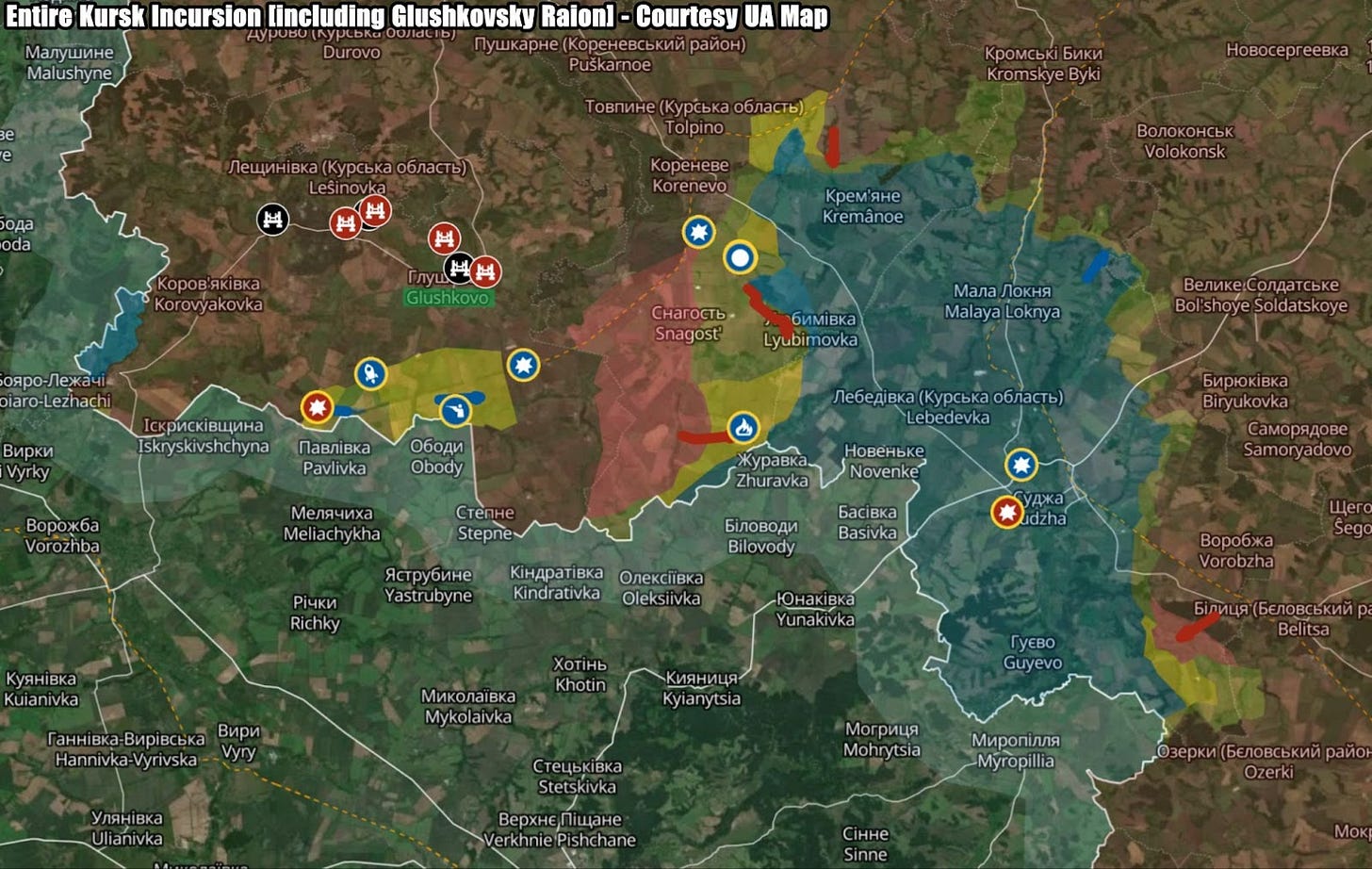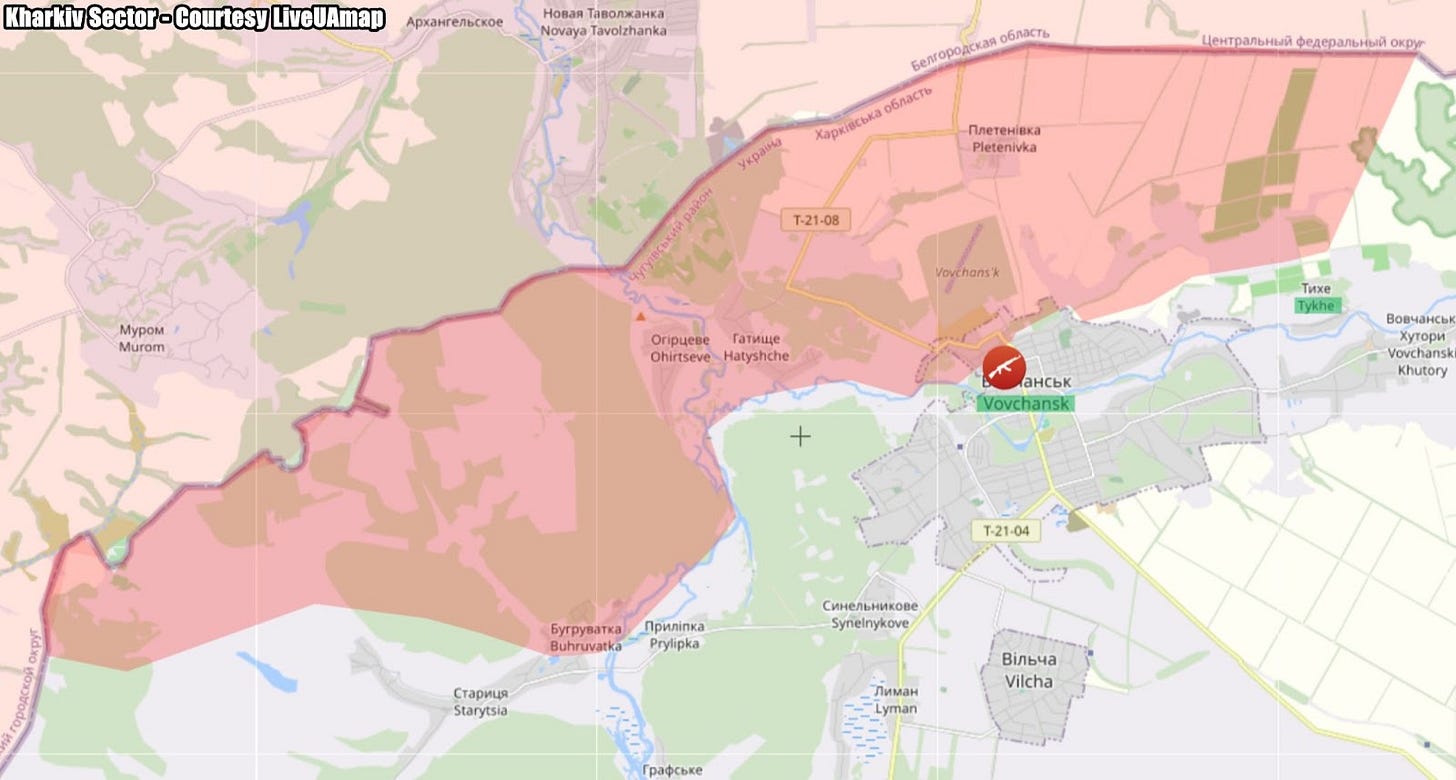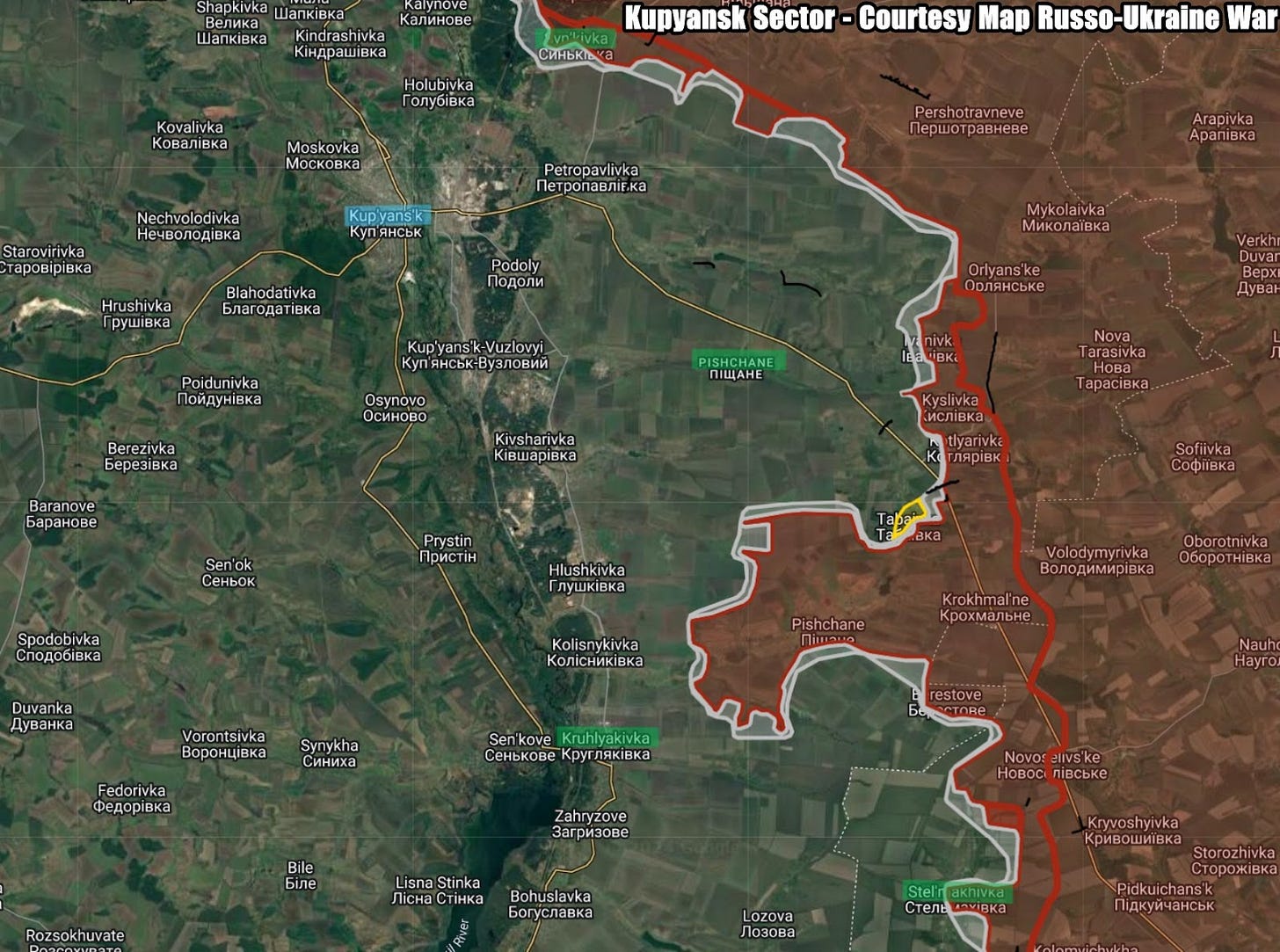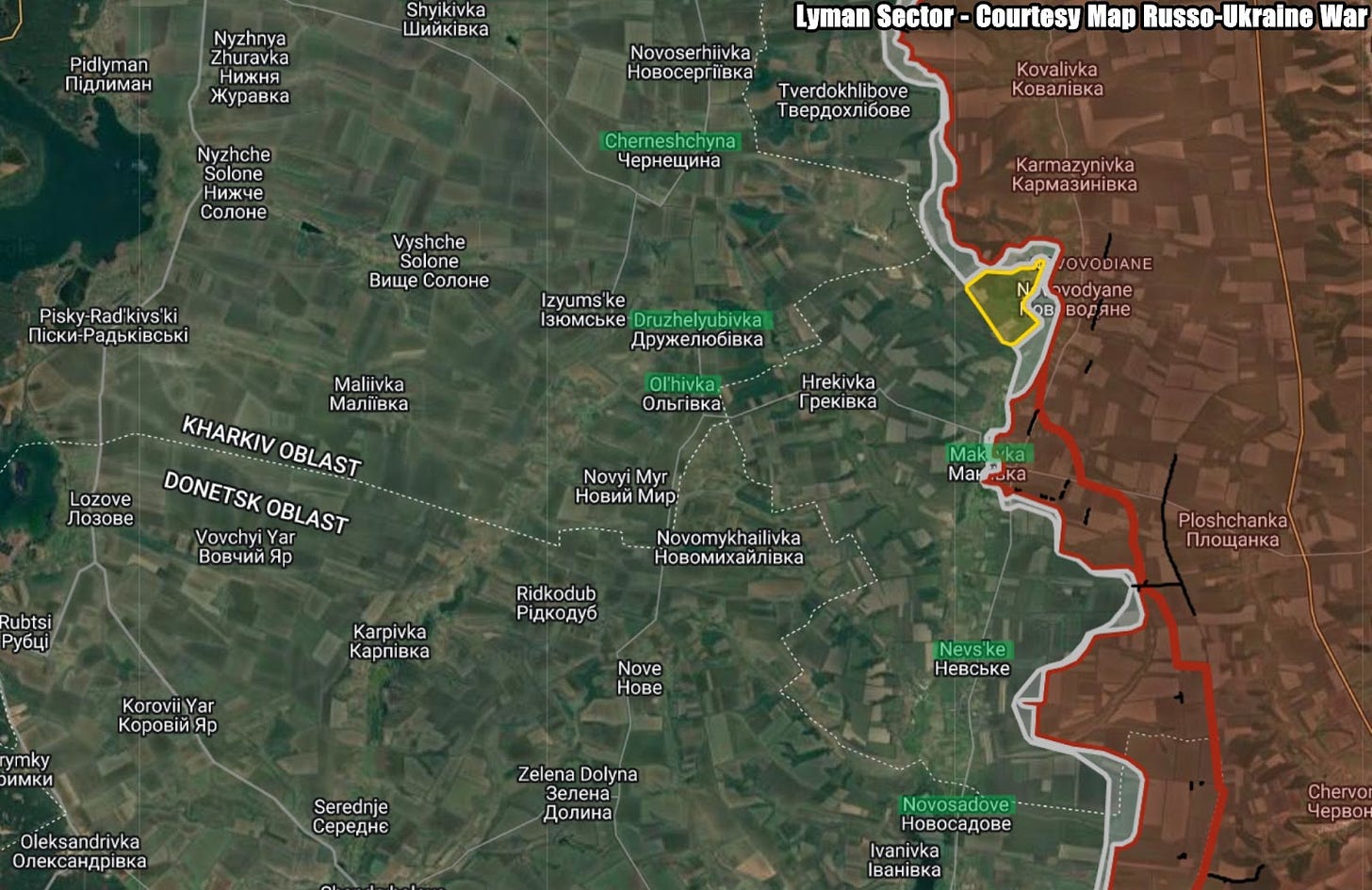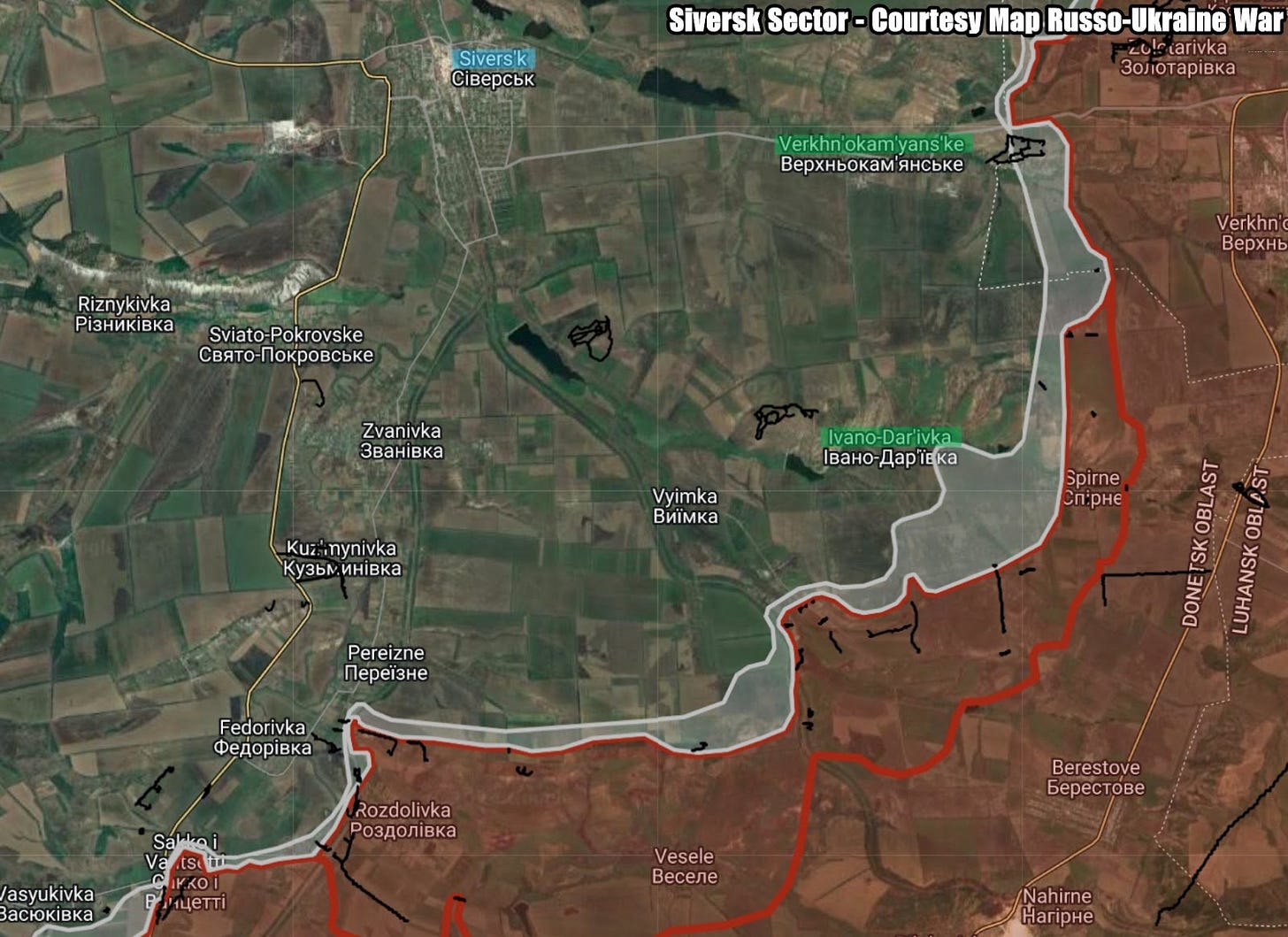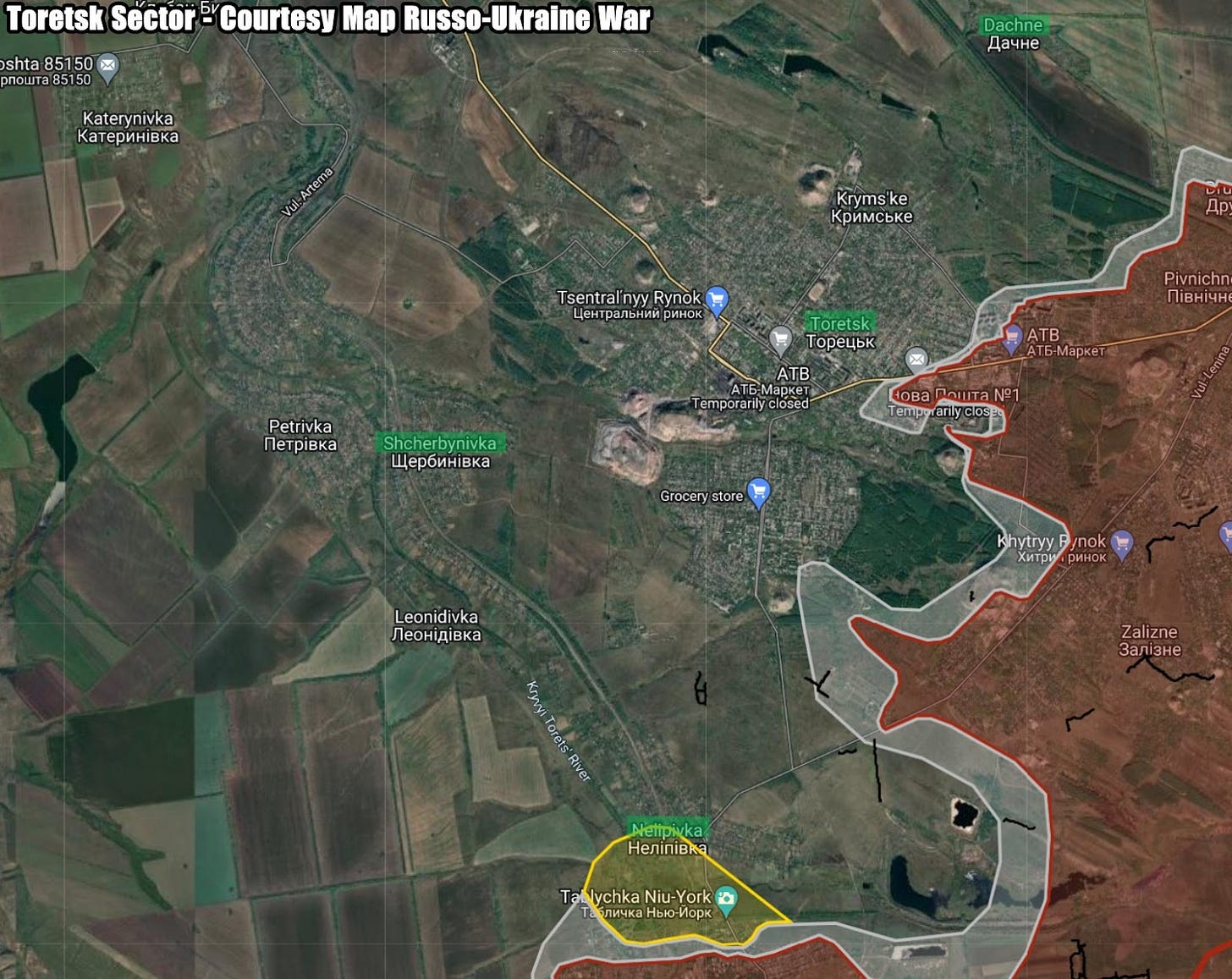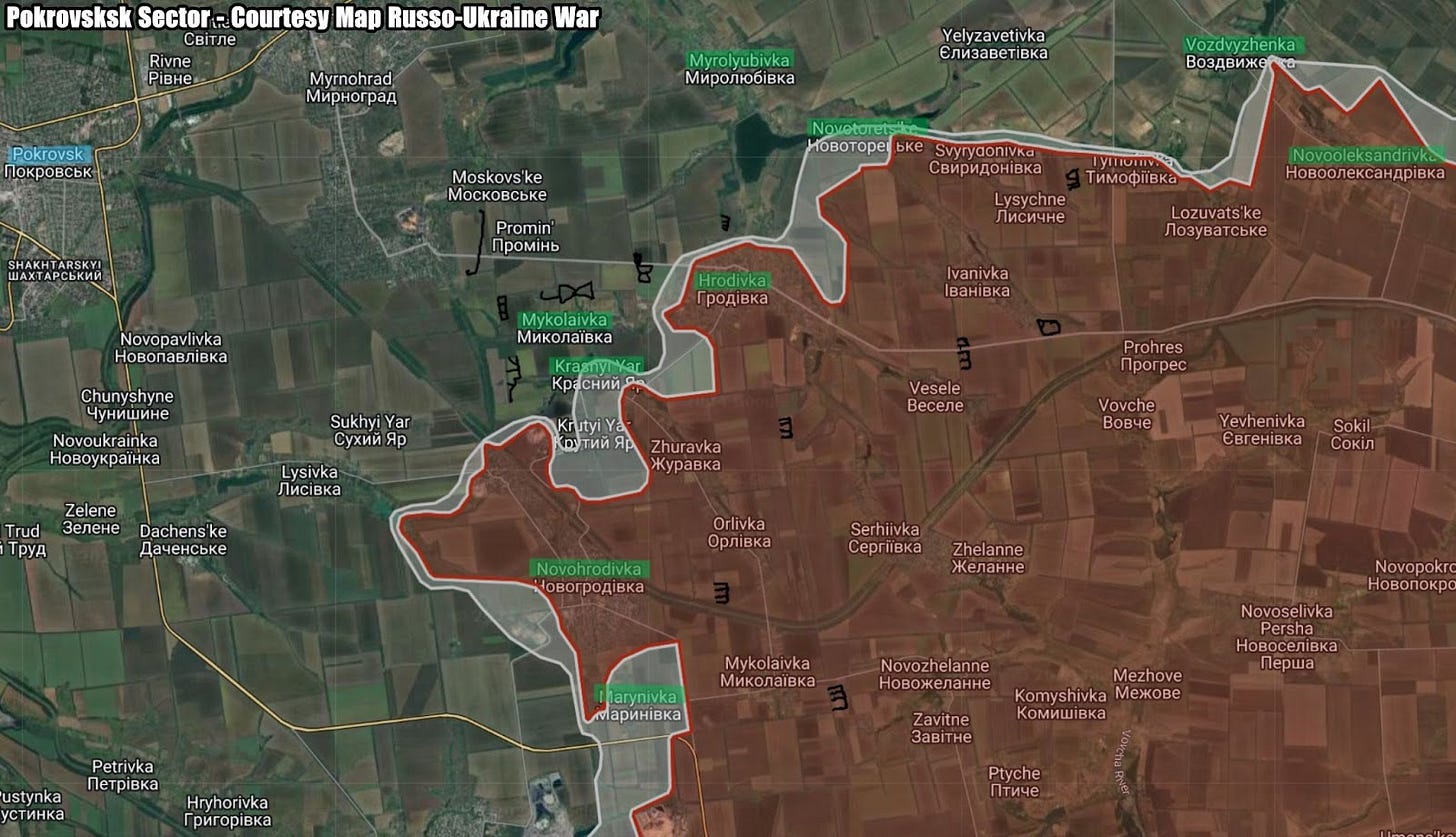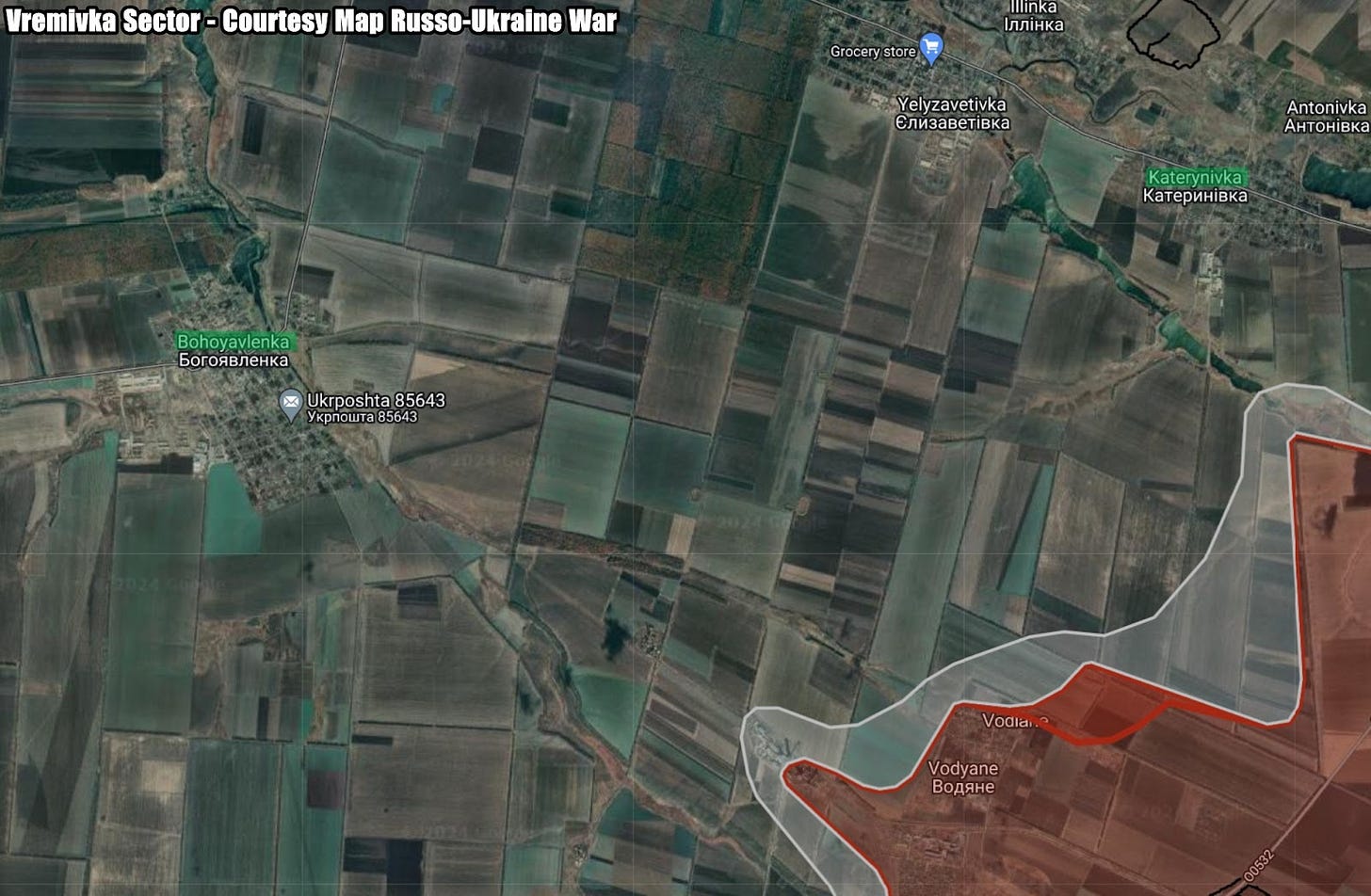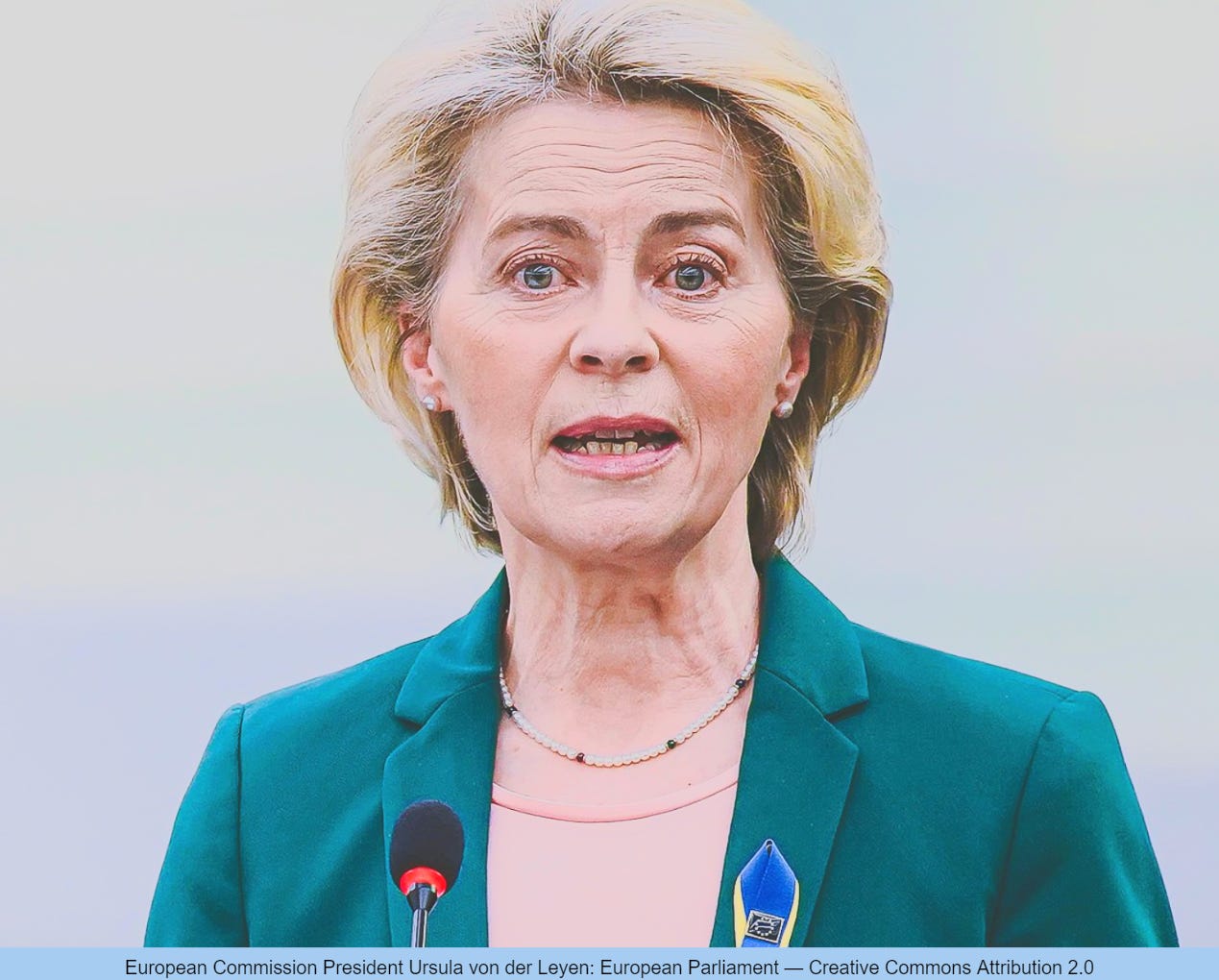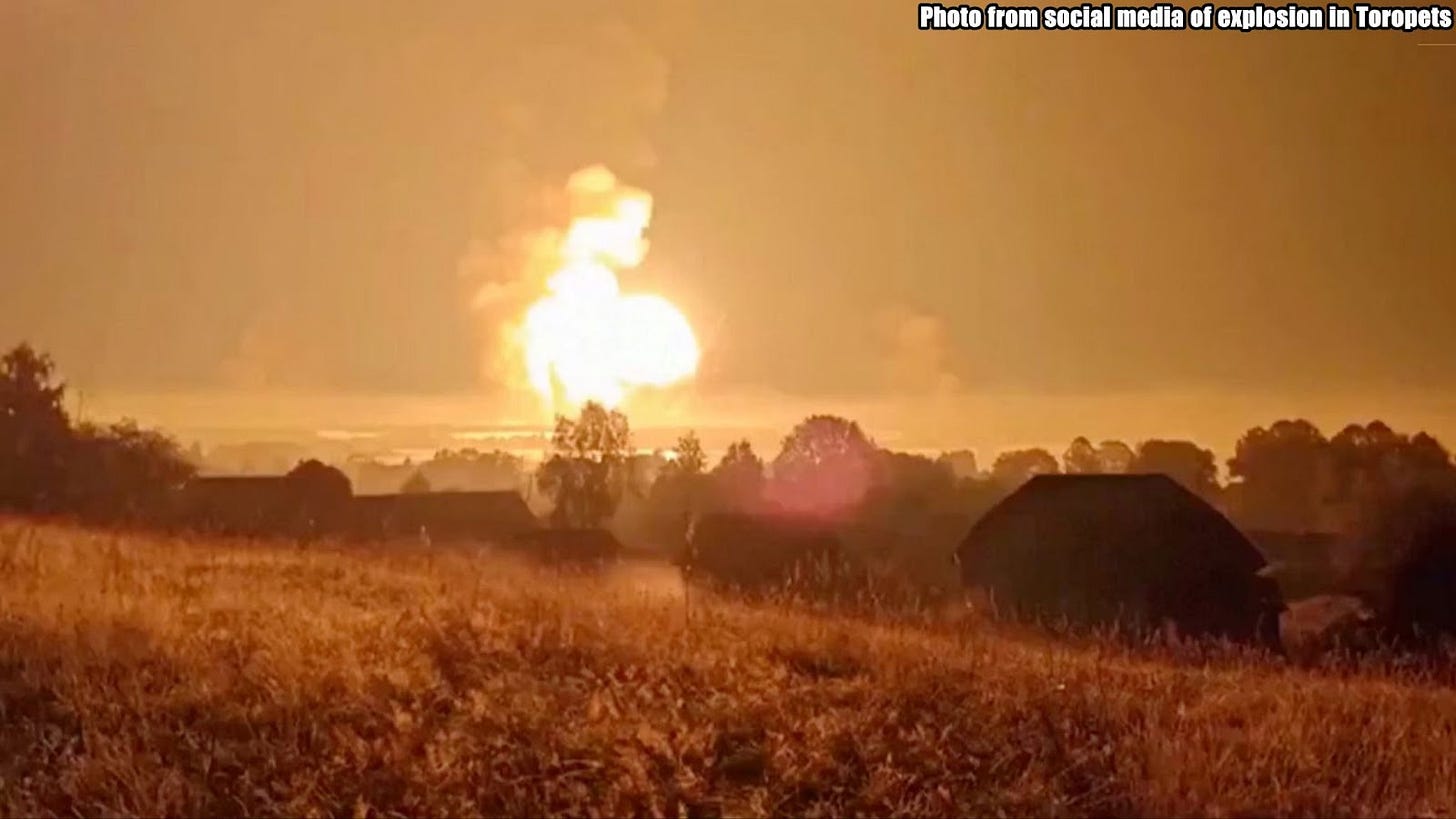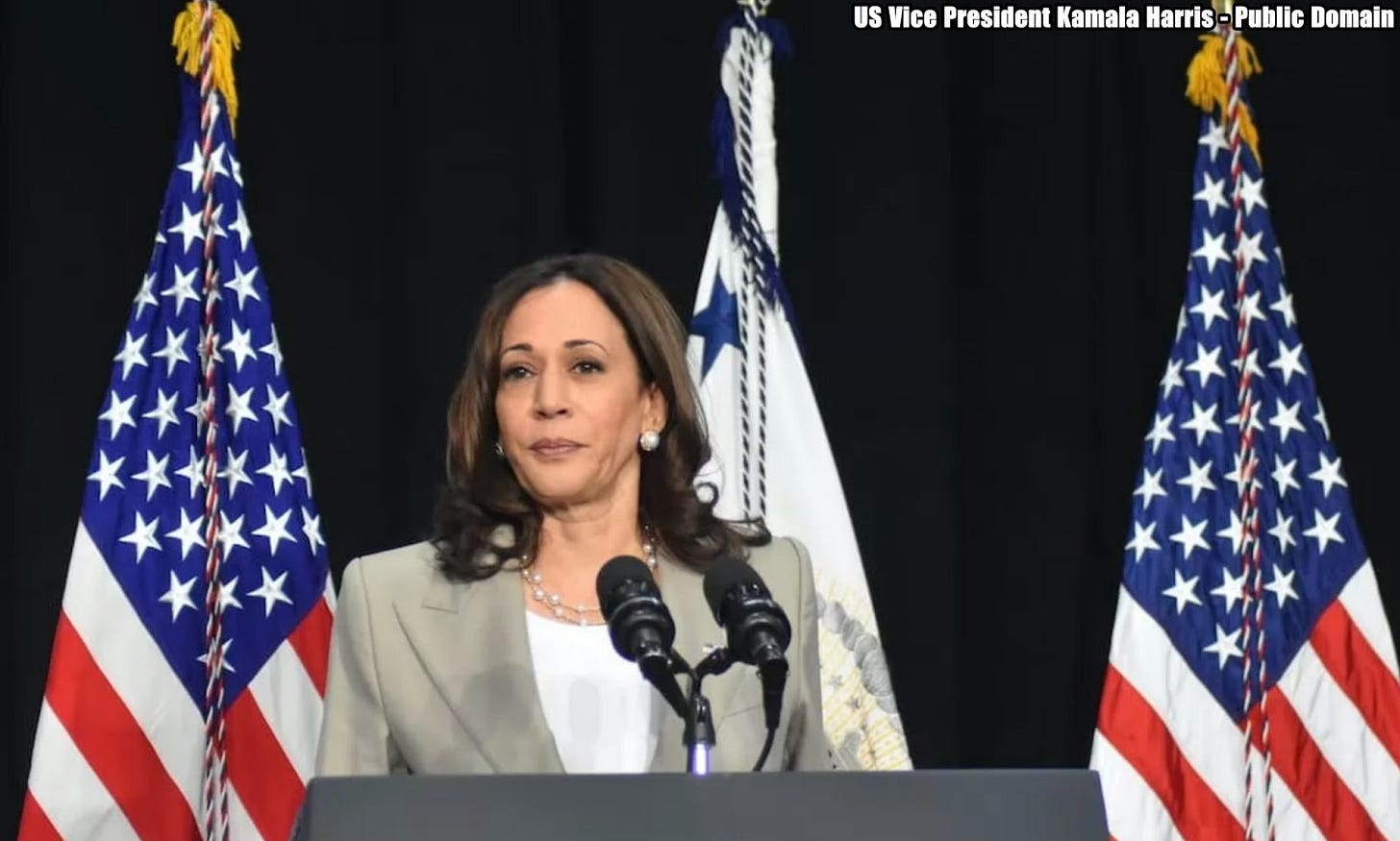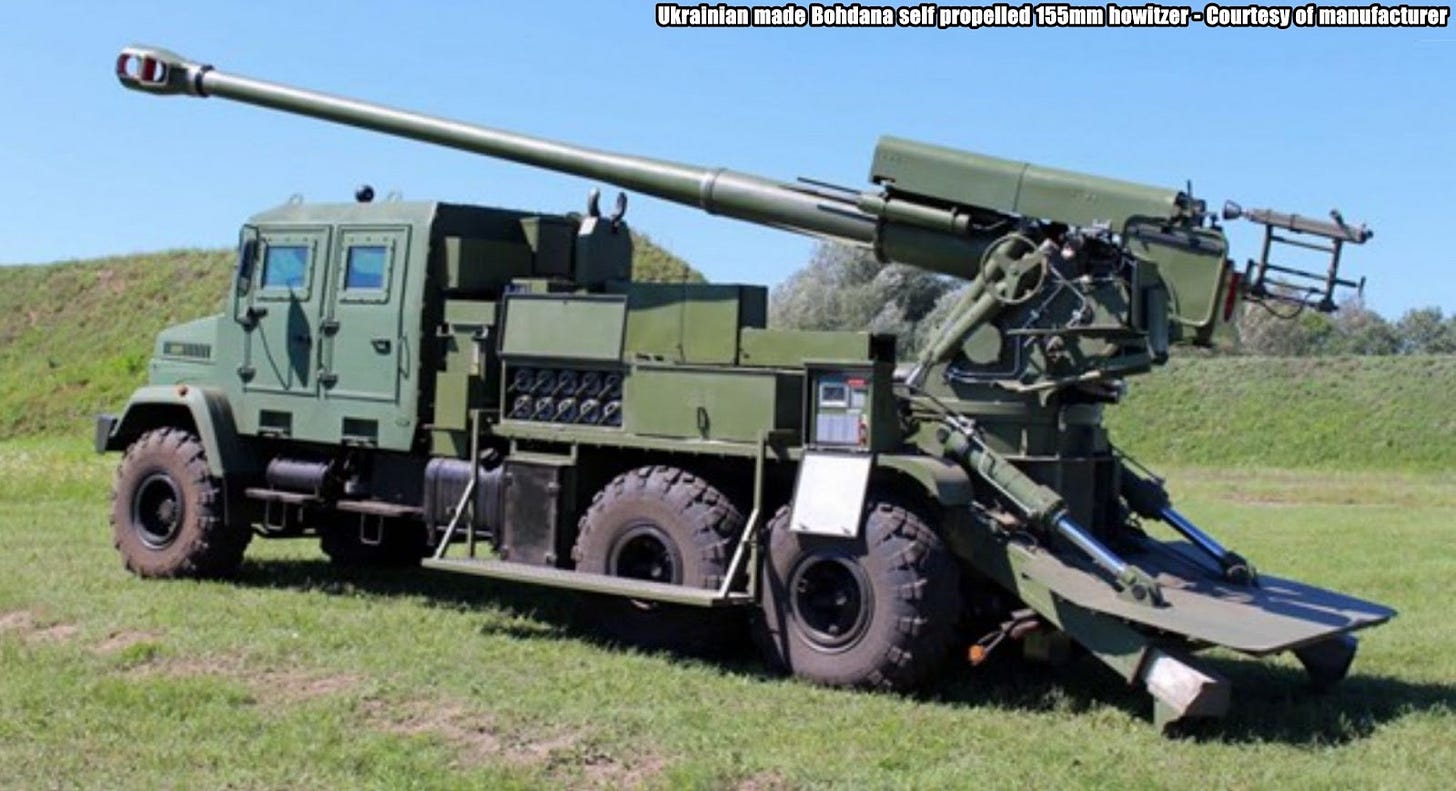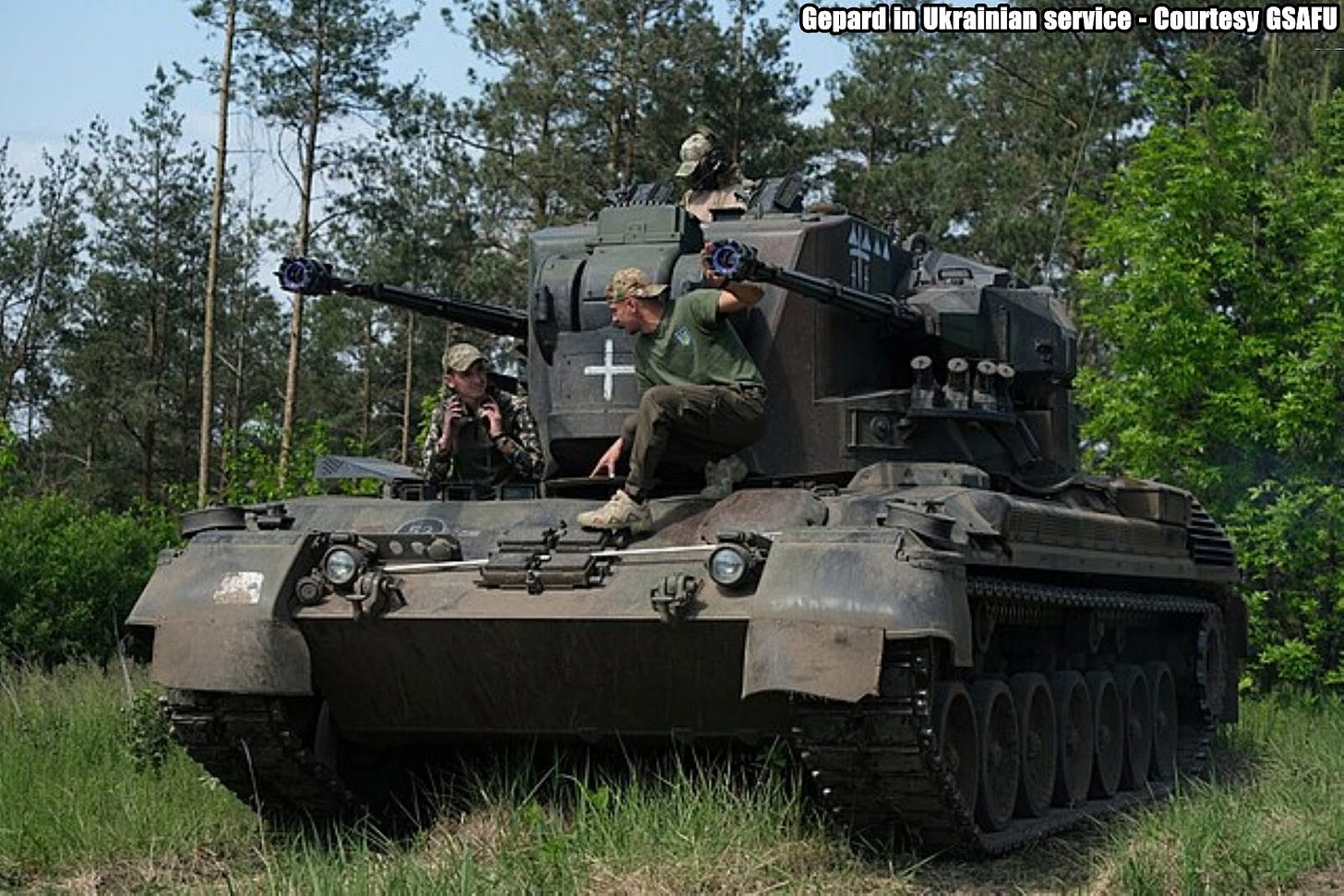Slava Ukraini! In early 2022 I began a Telegram channel aggregating news from a number of sources daily on the war in Ukraine. In June 2023 I began providing a daily draft for the Ukraine War Brief Podcast collecting news from over 70 sources daily, much of which formed the basis of the script. While the Podcast no longer exists I have continued to make this Brief available both on my own Substack and The People’s Media for those who wish to keep up with events on a daily basis.
All the latest news on the Russo-Ukraine War 6 days per week
ALONG THE CONTACT LINE
GSAFU Morning Report
The General Staff of the Armed Forces of Ukraine in its Operational Information update at 22:00 on Sep 18 stated that day 939 of the full-scale invasion of the Russian Federation against Ukraine was about to begin.
During the past day, 153 combat engagements took place. Over the past 24 hours, the enemy carried out 1 missile strikes, 59 air strikes, 532 drone strikes and more than 3,300 artillery strikes across the positions of Ukrainian forces.
At the same time, Ukrainian soldiers continue to inflict losses in manpower and equipment on the occupying troops, exhausting the enemy along the entire front line and continue to disrupt the plans of Russian occupiers to advance deep into the territory of Ukraine.
Air Force Daily Report
42 ATTACK UAVS AND ONE GUIDED AVIATION MISSILE WERE SHOT DOWN
On the night of September 19, 2024, radio engineering troops of the Air Force detected and escorted 46 enemy air attack vehicles.
The occupiers hit Kharkiv region with three S-300/S-400 anti-aircraft guided missiles from the Belgorod region, one Kh-59/69 guided air missile from the airspace of the TOT of the Zaporizhia region, as well as 42 Shahed-type strike UAVs (launch areas: Primorsko-Akhtarsk, Kursk - Russian Federation).
The air attack of the enemy was repulsed by aviation, anti-aircraft missile forces, mobile fire groups and units of the Defense Forces of Ukraine. As a result of the anti-aircraft battle, all 42 attack UAVs were shot down!
A Kh-59/69 guided air missile was also shot down in the eastern direction.
Anti-aircraft defence worked in Dnipropetrovsk, Kyiv, Vinnytsia, Zhytomyr, Rivne, Cherkasy, Kirovohrad, Mykolaiv and Kherson regions.
The Russian Border Incursion
Both Ukraine and Russia made marginal gains in Kursk
The Institute for the Study of War (ISW), a US based think tank, in its Sep 18 Russian Offensive Campaign Assessment stated that Ukrainian forces reportedly continued assaults in Glushkovsky Raion west of their larger salient in Kursk Oblast on Sep18. Russian sources, including the Russian Ministry of Defense (MoD), claimed on Sep 18 that Russian forces repelled Ukrainian attacks near Veseloye (southwest of Glushkovo), Medvezhye (southeast of Veseloye), and Novy Put (south of Veseloye). Elements of the Russian 56th Airborne (VDV) Regiment (7th VDV Division) and 51st VDV Regiment (106th VDV Division) are reportedly repelling Ukrainian assaults in Glushkovsky Raion.
Ukrainian forces recently expanded their larger salient in Kursk Oblast amid continued Ukrainian offensive operations in the area on Sep 18. Geolocated footage published on Sep 17 indicates that Ukrainian forces recently advanced east of Krasnooktyabrskoye (southwest of Korenevo). The Russian MoD claimed on Sep 17 that Ukrainian forces attacked southeast of Korenevo near Obukhovka and Lyubimovka and northwest of Sudzha near Malaya Loknya.
Russian forces recently recaptured territory in the Ukrainian salient in Kursk Oblast amid continued Russian counterattacks in the area on Sep 18. Geolocated footage published on Sep 17 and 18 indicates that Russian forces recently advanced eastward along two forested areas southeast of Korenevo and south of Obukhovka (southeast of Korenevo). Russian milbloggers claimed on Sep 18 that Russian forces operating east of Korenevo advanced south of Durovka and along the Korenevo-Sheptukhovka-Safonovka(35H-564) highway.
Russian milbloggers claimed on Sep 16 and 17 that Russian forces advanced near Olgovka (east of Korenevo) and Uspenovka (southeast of Korenevo). The Russian MoD claimed on Sep 18 that Russian forces conducted offensive operations southeast of Korenevo near Nikolayevo-Daryino, Daryino, Lyubimovka and Tolsty Lug and southeast of Sudzha near Plekhovo. Geolocated footage published on Sep 18 shows that Russian forces recently conducted a platoon-sized mechanized assault against Ukrainian positions southeast of Korenevo. Elements of the Russian 11th Airborne (VDV) Brigade and elements of the 810th Naval Infantry Brigade (Black Sea Fleet [BSF], Southern Military District [SMD]) are reportedly operating in Kursk Oblast.
Ukrainian Kharkiv Oblast Military Administration Spokesperson Oleksiy Dmitrashkivskyi told Agence-France-Presse (AFP) on Sep 18 that Ukrainian forces "stopped" Russia's "counteroffensive" in Kursk Oblast and have stabilised the situation. Dmitrashkivskyi stated that Russian forces recaptured an unspecified settlement and entered another unspecified settlement in Kursk Oblast following the start of Russian counterattacks on the night of Sep 10 to 11. ISW has yet to observe Ukrainian forces halting Russian advances entirely in Kursk Oblast, although Dmitrashkivskyi may be referencing events that have fallen outside of the available information within the collect cutoff for this report. ISW continues to track observable Russian counterattacks in Kursk Oblast but has not yet observed large-scale combat operations indicating that Russian forces have started a large-scale concerted counteroffensive operation aimed at completely expelling Ukrainian forces from Kursk Oblast.
The Khortytsia operational-strategic group
(Responsible for the northeastern part of Ukraine. )
Kharkiv Sector: Over the last day Ukrainian Defense Forces repelled 2 Russian attacks near Vovchansk and Tykhe
Kupyansk Sector: Russian Forces carried out 15 unsuccessful offensive actions against Ukrainian defensive positions near Synkivka, Pishchane, Kruhlyakivka and Stelmahivka.
Lyman Sector: Russian Forces carried out 18 offensive actions against Ukrainian defensive positions near Cherneshchyna, Druzhelyubivka, Olhivka, Makiivka, Nevske and Novosadove.
Siversk Sector: Russian forces carried out 3 assaults in the vicinity of Verkhnokamianske and Ivano-Darivka. 1 battle continues.
Kramatorsk Sector: Russian forces carried out 4 offensive actions near Chasiv Yar, Stupochky and Bila Hora.
Toretsk Sector: Russian forces carried out 12 offensive actions with air support near Dachne, Toretsk Shcherbynivka and Nelipivka. 1 engagement continues.
The Tavria operational-strategic group
(Responsible for the central-eastern and southeastern part of Ukraine.)
Pokrovsk Sector : The enemy conducted 39 attacks against Ukrainian defences in this area over the last day in the vicinity of Novooleksandriivka, Vozdvyzhenko, Novotoretske, Myrolyuivka, Hrodivka, Mykolaivka, Krasnyi Yar, Novohrodivka and Marynivka. 2 clashes continue.
Kurakhove Sector: There were 40 combat clashes in the vicinity of Ukrainsk, Tsukuryne, Zhelanne Persha, Heorhiivka, Dalnje and Konstantinivka. 2 engagements are ongoing.
Vremivka Sector: Russian forces made 6 assaults against Ukrainian positions near Katerynivka and Bohoyavlenka. 4 engagements are ongoing.
Orikhiv Sector: There has been no significant change in the combat environment in the last 24 hours.
The Odesa operational-strategic group
(Responsible for Kherson, Qırım, (also known as Crimea) and the Black Sea.)
Prydniprovsk Sector: There has been no significant change in the combat environment in the last 24 hours.
TEMPORARILY OCCUPIED TERRITORIES
Nothing major to report.
THE HOME FRONT
Ukraine faces 17 GW power shortage this winter with 80% of TPPs destroyed
The EU will support Ukraine’s energy sector ahead of winter through repair, connection, and stabilisation efforts, European Commission President Ursula von der Leyen said on Sep 19 at a joint press conference with International Energy Agency Executive Director Fatih Birol in Brussels, Interfax-Ukraine reports.
"The goal is to meet the immediate needs of the population while making Ukraine's energy system more sustainable long-term, with Ukraine needing 17 GW of power this winter," said European Commission President Ursula von der Leyen.
She added that 80% of Ukraine’s thermal power plants and a third of its hydropower capacity were destroyed.
"So we are focusing on repairs to restore 2.5 GW of capacity this winter, about 15% of Ukraine's needs," von der Leyen said.
The EU will continue providing support through its civil protection mechanism, having already sent over 10,000 generators and transformers to Ukraine, with more aid on the way.
After February 2022, Ukraine’s electricity grid was synchronized with the European system. "We export 2 GW of electricity to Ukraine, covering about 12% of its winter needs," von der Leyen noted, compensating for the loss of electricity from the Zaporizhzhya Nuclear Power Plant.
Overall, due to repairs and connection to the European grid, the EU will cover over 25% of Ukraine’s energy needs this winter, von der Leyen added.
RUSSIAN WORLD
Russia will find Military expansion goals hard to meet
The UK Ministry of Defence in their Sep 19 Intelligence Update on Ukraine stated that on Sep 16, 2024, russian President Putin signed a decree to increase the size of the russian military with an additional 180,000 personnel to 1.5 million in total coming into effect from Dec 2024. This is the third decree that has been signed by Putin to increase the size of the Russian military since the start of the full-scale invasion in Feb 2022.
Russia’s aspiration to expand its military is well-established. In December 2022, then-Defense Minister Sergei Shoigu called on Russian forces to be enlarged to 1.5 million. Russia will likely increase the number and size of units in its ground forces to accommodate the majority of the additional 180,000 personnel.
Despite the stated intent to expand its force, it is likely that this ambition will be hampered by continued heavy losses sustained in the conflict against Ukraine and recruitment challenges
Continued long range strikes on Russian logistics facilities could have strategic effect on Russia's ability to maintain offensives
The Institute for the Study of War (ISW), a US based think tank, in its Sep 18 Russian Offensive Campaign Assessment stated that Continued Ukrainian strikes against rear Russian logistics facilities within Russia will generate wider operational pressures on the Russian military beyond the individual destruction of ammunition stockpiles and logistics facilities. Suspilne's sources noted that Ukrainian strikes are undermining Russia's ability to conduct long-range missile strikes against Ukraine.[8] Ukrainian forces conducted a series of HIMARS strikes against Russian ammunition depots throughout occupied Ukraine in Summer 2022, prompting Russian forces to disperse ammunition storage facilities and degrading the efficiency of Russian logistics at the time.
Repeated strikes against ammunition depots within Russia that cause similar levels of damage to the strike in Toropets may force a similar decision point on the Russian military command to reorganise and disperse support and logistics systems within Russia to mitigate the impact of such strikes. Russian forces may not have addressed vulnerabilities at many logistics facilities within Russia due to the sanctuary space that restrictions on Ukraine's use of Western-provided weapons have generated, although the Toropets facility is not within range of Western systems fired from Ukraine.
The lifting of restrictions on the use of Western systems and the continued development of Ukraine's own long-range strike capabilities may allow Ukrainian forces to more effectively exploit such Russian vulnerabilities. Ukrainian forces struck another Russian ammunition depot near Sergeevka, Voronezh Oblast in July 2024 and continued Ukrainian strikes against Russian ammunition and missile storage facilities could also destroy an important portion of Russia's materiel reserves. Ukrainian strikes against facilities within Russia could impact offensive operations throughout the theatre in Ukraine if Ukrainian forces have the materiel, capabilities, and permission to conduct such a strike campaign against logistics and support facilities within Russia at scale.
NEWS WORLDWIDE
Ammunition from India enters Ukraine, raising Russian ire
Artillery shells sold by Indian arms makers have been diverted by European customers to Ukraine and New Delhi has not intervened to stop the trade despite protests from Moscow, according to eleven Indian and European government and defence industry officials, as well as a Reuters analysis of commercially available customs data. Reuters reports.
The transfer of munitions to support Ukraine's defence against Russia has occurred for more than a year, according to the sources and the customs data. Indian arms export regulations limit the use of weaponry to the declared purchaser, who risks future sales being terminated if unauthorised transfers occur.
The Kremlin has raised the issue on at least two occasions, including during a July meeting between Russian Foreign Minister Sergei Lavrov and his Indian counterpart, three Indian officials said.
Details of the ammunition transfers are reported by Reuters for the first time.
The foreign and defence ministries of Russia and India did not respond to questions. In January, Indian foreign ministry spokesperson Randhir Jaiswal told a news conference that India had not sent or sold artillery shells to Ukraine.
Two Indian government and two defence industry sources told Reuters that Delhi produced only a very small amount of the ammunition being used by Ukraine, with one official estimating that it was under 1% of the total arms imported by Kyiv since the war. The news agency couldn't determine if the munitions were resold or donated to Kyiv by the European customers.
Among the European countries sending Indian munitions to Ukraine are Italy and the Czech Republic, which is leading an initiative to supply Kyiv with artillery shells from outside the European Union, according to a Spanish and a senior Indian official, as well as a former top executive at Yantra India, a state-owned company whose munitions are being used by Ukraine.
The Indian official said that Delhi was monitoring the situation. But, along with a defence industry executive with direct knowledge of the transfers, he said India had not taken any action to throttle the supply to Europe. Like most of the 20 people interviewed by Reuters, they spoke on condition of anonymity due to the sensitivity of the matter.
EU Parliament calls for the lifting of restrictions on strikes on the territory of the Russian Federation
The European Parliament has called on EU member states to withdraw existing restrictions, which prevent Ukraine from using Western weapons systems to defeat legitimate military targets in Russia. The European Parliament’s reported, the resolution was supported by 425 European MPs, 63 abstained and 131 opposed.
The text of the resolution states that without lifting the current restrictions, Ukraine cannot fully exercise its right to self-defence and remains vulnerable to attacks on its civilian population and infrastructure.
The European Parliament stressed that insufficient supply of ammunition and restrictions on their use pose a risk that efforts will be nullified earlier. MEPs also expressed regret over the reduction in bilateral military assistance to Ukraine from EU countries.
EP deputies also stressed that sanctions against Russia, Belarus and other countries that provide Russia with military and dual-use technologies should be maintained and expanded. The resolution condemns Iran's supply of ballistic missiles to Russia and calls for stronger sanctions against Iran and North Korea for their involvement in supporting Russia's war against Ukraine.
MEPs want to see sanctions against more Chinese individuals and legal entities, as well as tougher measures to systematically address the issue of circumvention of sanctions by companies with the EU, third parties and non-EU countries.
At the same time, the resolution states the need to confiscate Russian assets to compensate for the destruction caused to Ukraine.
Harris Plans Meeting With Zelenskyy in Washington Next Week
Kamala Harris plans to meet with Ukrainian President Volodomyr Zelenskyy in Washington next week, according to a person familiar with the matter, as the Democratic nominee tries to broaden her foreign policy profile. Bloomberg reports.
Harris has strongly supported President Joe Biden’s steadfast support of Ukraine in its defence against Russia’s invasion, which began in February 2022.
The encounter comes at a crucial time as Russian forces have made some gains in the deadlocked conflict as winter approaches.
Zelenskyy is expected to push for NATO and European Union membership, economic and security agreements and a continued supply of more advanced weapons as part of his “victory plan” when he visits the US, according to people familiar with the matter.
He’s due to present the plan to Biden when they meet on the sidelines of the United Nations General Assembly later this month. He is also keen to share the plans with Harris and Trump.
During last week’s presidential debate, Donald Trump, the Republican nominee, twice declined to say if he wanted Ukraine to win the war, instead saying he wanted the fighting to end and would have the two countries’ leaders meet and work out a deal.
Harris seized on Trump’s comments, saying Russian President Vladimir Putin would be “sitting in Kyiv with his eyes on the rest of Europe” if Trump hadn’t lost to President Joe Biden in 2020.
MILITARY & TECH
EU transfers €400 million from frozen Russian assets to Ukraine, funding 18 new Bohdana howitzers
The European Union has transferred €400 million from frozen Russian assets to bolster Ukraine's defence industry. EU Ambassador to Ukraine, Katarina Mathernova, has announced that these funds were used to procure 18 'Bohdana' self-propelled howitzers. Interfax Ukraine reports.
Mathernova emphasised the significant change in European policy, highlighting that the entire sum was allocated directly to the Ukrainian defence sector.
In an interview with Interfax Ukraine, Ambassador Mathernova stated, “This supports the Ukrainian economy," acknowledging Denmark's leadership in reallocating funds earned from frozen assets. The envoy confirmed that additional financial support is in the pipeline to further enhance Ukraine's indigenous arms production.
Furthermore, Mathernova has proposed Lithuanian Andrius Kubilius for the new role of European Commissioner for Defense Industry. Calling him a great friend of Ukraine, she expects Kubilius to foster closer cooperation between Ukraine and the EU in defence.
Ambassador Mathernova also highlighted that two-thirds of the funding for the newly purchased 'Bohdana' howitzers came from these liberated assets. She expressed hope that other countries would follow suit, leveraging the innovative developments in Ukraine's defence sector as a platform for further investment.
On September 17, the President of the European Commission nominated Andrius Kubilius for the position, underscoring his potential to significantly advance the collaboration between Ukraine and Europe’s defence industries.
Germany supplies more weapons to Ukraine
Berlin has handed over 22 Leopard 1 A5 tanks, 61,000 155 mm rounds of ammunition, three Gepard self-propelled anti-aircraft guns with spare parts, and other equipment in its latest delivery of military aid to Ukraine, the German government reported on Sept. 19.
The tranche also included five Bandvagn 206 all-terrain vehicles, two air surveillance TRML-4D radars, and an all-terrain tracked carrier Warthog, as well as 112 vehicles from Bundeswehr and industry stocks.
Ukraine received 30 Vector drones, 20 Heidrun RQ-35 reconnaissance drones, 12 Songbird drones, six Hornet XR drones, and 20 naval drones.
Berlin further delivered three Beaver bridge-laying tanks with spare parts, a Dachs armoured engineer vehicle with spare parts, and six Wisent 1 mine-clearing tanks.
The 22 Leopard 1 A5 tanks with spare parts were delivered under a joint initiative with Denmark.
Initially a hesitant partner, Berlin became Ukraine's second-largest military donor after the U.S., although German Chancellor Olaf Scholz is still reluctant to supply some key capabilities, namely Taurus long-range missiles.
According to an agreed-upon federal budget, Germany's military aid to Ukraine will be cut by half next year when compared to 2024. Berlin has allocated around 8 billion euros ($8.7 billion) to Kyiv in 2024, whereas the next year's support is currently set at 4 billion euros ($4.35 billion).
That’s it for today’s Draft folks if you would like to keep up with events in Ukraine daily please consider subscribing, its free!
Feel free to share this update with your friends. Heroyam Slava!







